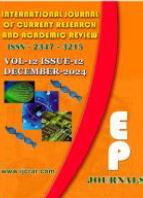Abstract Volume:12 Issue-12 Year-2024 Original Research Articles
 |
Online ISSN : 2347 - 3215 Issues : 12 per year Publisher : Excellent Publishers Email : editorijcret@gmail.com |
2Laboratoire de Matériaux, d’énergétique, d’électricité et d’économie, UniversityIba Der Thiam of Thies, Thies, Senegal
More than a third of the world's population now lives in earthen dwellings (UN Habitat, 2008 in Danso and al., 2015), which offer many environmental, social and cultural benefits. In Senegal, compressed earth blocks (CEB), using laterite as the base material, are by far the most widely used technique. Indeed, lateritic gravel borrowings are relatively well distributed throughout the national territory, and reserves of lateritic materials were estimated at 1 384950 m3 in 2017 (Diop, 2022). Comparing laterites from different sites can allow the builder to use the soils that give the best results. The aim of this study is to compare the Thicky and Sindia laterites to determine which one gives the most resistant blocks in compression. The influence of the stabilizer content were studied with several dosages of cement: 0%, 3% and 6%. The compression test periods were set at 7, 14, 21 and 28 days. During this period, the brocks were wrapped in plastic film to maintain their water content. The compressive strength measurements were carried out by crushing the brocks with a 2000 kN capacity press. Results after analysis of laterite-based blocks from Sindia: the unstabilized blocks have a compressive strength of 0.41 MPa at 7 days and 1.12 MPa at 28 days; the 3% cement stabilization gives a strength of 1.24 MPa at 28 days, while the 6% stabilization reaches 2.16 MPa; the resistance to water absorption after 28 days of curing is 13.64% for stabilization at 6% cement. Results after analysis of laterite-based blocks from Thicky: the unstabilized blocks give a compressive strength of 1.71 MPa at 7 days and 2.47 MPa at 28 days; the 3% cement stabilization gives a strength of 3.04 MPa at 28 days, while the 6% stabilization reaches 3.62 MPa; the resistance to water absorption after 28 days of curing is 6.88% for stabilization at 6% cement. Thus, laterite-based blocks from Thicky are more resistant than those of Sindia, both in terms of compression and resistance to water absorption.
How to cite this article:
Mbaye Wade, Macodou Thiam, Mamadou Pathé Wane and Makhaly Ba. 2024. Mechanical Characterization of Blocks of Compressed Earth: Comparative Study of Thicky and Sindia Laterites in the Region of Thiès, Senegal.Int.J.Curr.Res.Aca.Rev. 12(12): 62-69doi: https://doi.org/10.20546/ijcrar.2024.1212.008



Quick Navigation
- Print Article
- Full Text PDF
- How to Cite this Article
- on Google
- on Google Scholor
- Citation Alert By Google Scholar
